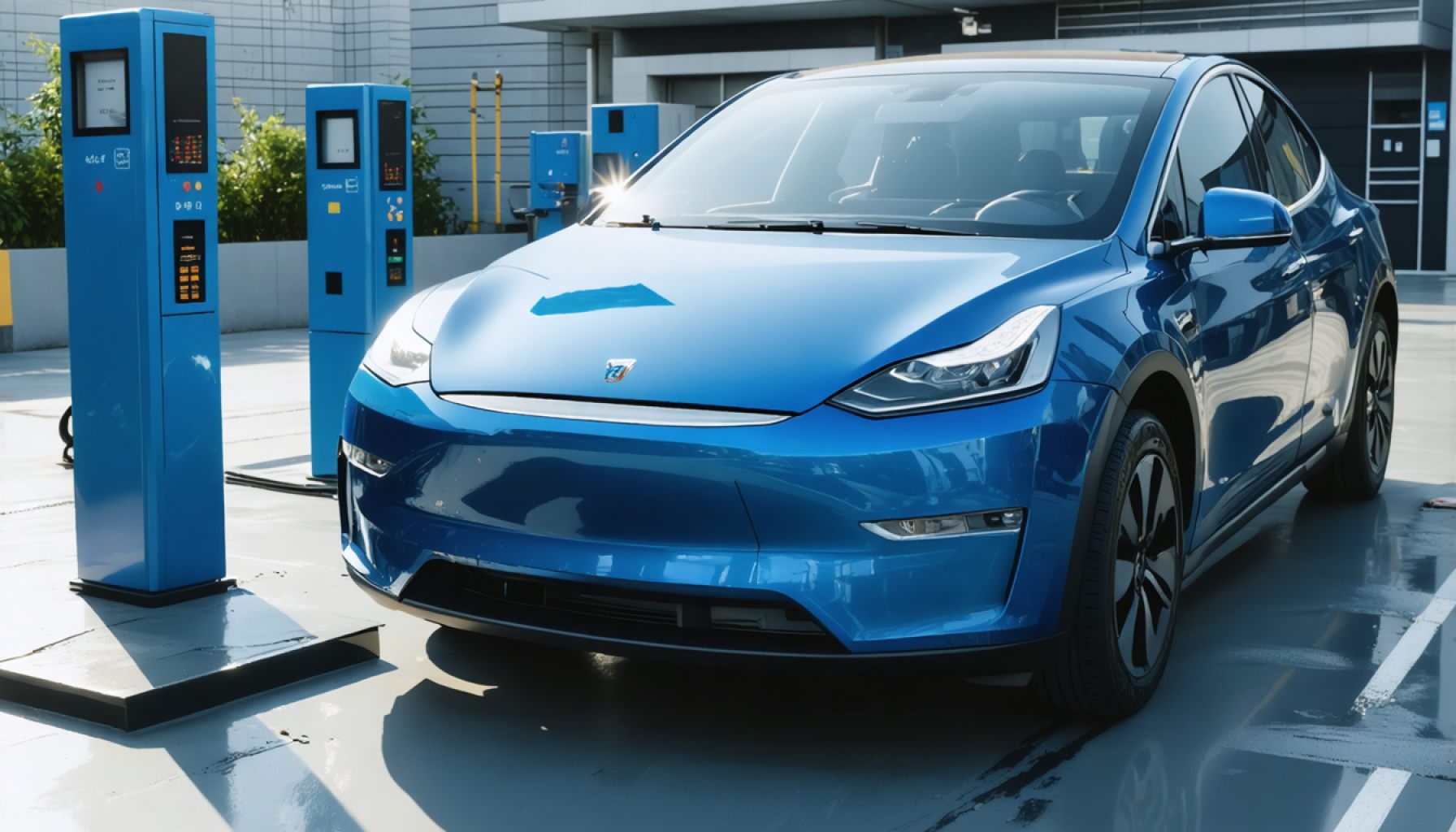- Shares of India’s battery giants, Amara Raja and Exide Industries, have risen by 5% and 4%, driven by new government policy changes.
- The Indian government has reclassified lithium-ion batteries as ‘core auto components’ for electric and hybrid vehicles.
- This reclassification raises the safe harbour threshold from ₹200 crore to ₹300 crore, easing compliance requirements.
- The new policy aims to foster investment, innovation, and efficiency in India’s evolving electric vehicle (EV) ecosystem.
- Transfer pricing will be streamlined, reducing regulatory burdens for battery manufacturers in cross-border transactions.
- This shift reflects India’s proactive role and commitment to leadership in the global EV revolution and a sustainable future.
The financial tides have recently changed for two of India’s battery giants, Amara Raja and Exide Industries, as their shares climbed energetically by 5% and 4% respectively. This positive turn comes in the wake of the Indian government’s progressive decision to reclassify lithium-ion batteries as ‘core auto components’ for electric and hybrid vehicles.
Through the lens of this new classification, the Centre’s bold move elevates the safe harbour threshold from ₹200 crore to ₹300 crore. This pivotal adjustment is more than just an administrative change; it’s a visionary step designed to accelerate India’s journey toward a robust electric vehicle (EV) ecosystem. By easing the compliance landscape, the government is paving the way for heightened investment and innovation in the sector that powers the wheels of tomorrow.
Visualise a bustling market where compliance risks once loomed like formidable roadblocks. With this policy shift, battery manufacturers like Amara Raja and Exide can now weave through bureaucratic hurdles with newfound agility. By reducing the scrutiny traditionally associated with the import of these essential components, India is lighting the path for an energised import process. A previously arduous road is now an inviting avenue promoting efficiency and progress.
At the heart of this narrative lies transfer pricing—a nuanced but crucial dance of numbers when companies engage in cross-border transactions. Tax authorities, ever watchful, seek to ensure that prices declared between subsidiaries are aboveboard and not a cloak for profit-shifting to tax havens. Here lies the beauty of the Centre’s ‘safe harbour’ policy. It extends a trusting hand that promises smooth sailing for companies declaring their prices within prescribed limits. By doing so, it strips away layers of regulatory complexity, allowing corporations to focus on their core missions: innovation, production, and contribution to the emergent green economy.
As stocks of both Amara Raja and Exide inch upwards, they reflect more than just a market response; they echo a broader economic sentiment woven with optimism and readiness for change. These shifts embody a larger narrative of adaptation and foresight as India repositions itself in the global EV landscape.
Eventually, the takeaway resounds clearly: India is not just participating in the electric vehicle revolution—it is driving it. This reclassification is not merely a policy tweak; it is a beacon signalling India’s commitment to a cleaner, more sustainable future. For investors, it paints a promising horizon replete with potential and prosperity. For the nation, it reinforces a resolute journey toward innovation-led growth and environmental stewardship.
How India’s Strategic Moves in the EV Sector Are Igniting Market Momentum
Market Forecasts & Industry Trends
1. Growing EV Market: India’s electric vehicle market is on an upward trajectory, propelled by initiatives such as the reclassification of lithium-ion batteries. This change is anticipated to significantly boost the production and adoption of EVs, aiming for a target of 30% electric vehicle penetration by 2030. According to NITI Aayog, EV sales are expected to reach 10 million units by 2025, reflecting strong governmental support and increasing eco-conscious consumer behaviour.
2. Investment Surge: With the higher safe harbour threshold, battery companies are more likely to attract domestic and foreign investments. Analysts predict robust competition among manufacturers, leading to better pricing and innovation. This could encourage a 15% to 20% annual growth in the sector over the next five years.
How-To Steps & Life Hacks
– Optimising Battery Sourcing: Manufacturers can leverage the relaxed import regulations to optimise their supply chains. By securing cost-effective and reliable suppliers, they can improve production efficiency and output.
– Adapting Business Models: Businesses in the auto sector can align their strategy with the government’s green policies by investing in R&D for battery technologies, thereby enhancing product offerings in the EV space.
Real-World Use Cases
– Corporate Innovation: Amara Raja and Exide Industries can harness this regulatory shift to expand their production lines, focusing on developing advanced battery technologies such as solid-state batteries, which promise higher energy density and safety.
– Startup Ecosystem: The policy change could be a catalyst for startups specialising in battery management systems and charging infrastructure, key components of the EV supply chain.
Controversies & Limitations
1. Environmental Concerns: Despite the positives, there are lingering concerns over the environmental impact of lithium mining and battery disposal. Solutions such as enhanced recycling technologies are needed to mitigate these impacts effectively.
2. Infrastructure Gaps: For a successful EV ecosystem, charging infrastructure requires significant enhancement. Current infrastructure gaps may slow down the adoption rates, necessitating further policy support and investment.
Features, Specs & Pricing
– Battery Technology Trends: The focus will likely shift toward more efficient, long-lasting batteries. Features such as fast-charging capabilities and higher storage capacities will become standard expectations in the market.
– Cost Dynamics: Battery prices have been decreasing and are projected to drop below $100 per kWh by 2023, making electric vehicles more affordable and attractive to a broader consumer base.
Insights & Predictions
1. Transition to Renewables: As India commits to decarbonisation, the integration of renewable energy with EV infrastructure—such as solar-powered charging stations—could take centre stage.
2. Policy Evolution: Continuous policy evolution designed to incentivise innovation, including subsidies and tax breaks, will be critical in maintaining momentum in the sector.
Actionable Recommendations
– For Investors: Evaluate companies’ R&D investments and market positioning in the battery tech landscape before making investment decisions.
– For Consumers: Consider the total cost of ownership, including incentives for EV purchase, infrastructure availability, and battery life, before buying an electric vehicle.
Quick Tips
– Stay Informed: Regularly check updates from government portals and industry reports to stay ahead in the evolving EV market landscape.
– Participate in Green Initiatives: Engage with community programmes and forums to gain insights into sustainable practices in electric mobility.
For more information on India’s economic policies and innovations, visit the Government of India website.







